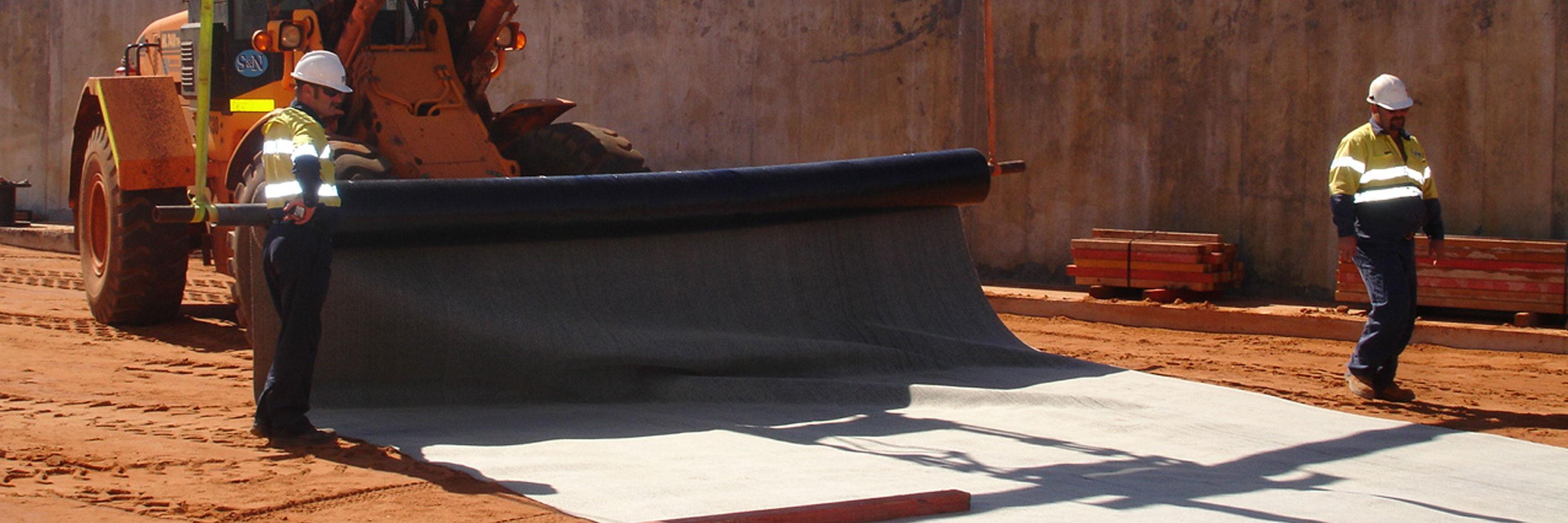Proven Through the Decades
Geosynthetic Clay Liners (GCL) such as Bentofix offer an affordable and effective alternative to compacted clays, particularly in the waste containment sector.
Bentofix has been used in a wide range of successful installations in Australia and further afield: More than 400,000m2 installed in a Hunter Valley Coal mine lagoon understood to be the largest installation in Australia , 100,000 square metres of Bentofix sits as a liner for a leachate pond at Port Hedland; 165,000m2 caps two massive landfills in Townsville, scores of landfills across the country and protects groundwater from waste leachate. In fact, there’s millions of square meters and decades of history showing Bentofix works – time and time again.
So how has Bentofix managed to remain the premier GCL in Australia?
GCLs: The Early Days
Bentofix was the first needle-punched thermal locked geosynthetic clay liner to hit the global market. Launched back in the eighties by NAUE, it was patented in 1987 and introduced to the US in 1992, hitting Australian shores shortly after in ’95.
The mid 1990s in Australia saw a boom in post-recession construction and development, and with this urban sprawl came an increase in waste facilities to support new communities and fledgling suburbs. It wasn’t long before forward-thinking engineers put Bentofix through its paces in the field, soon seeing that a needle-punched thermal locked GCL was often faster to install, more reliable and offered more predictable performance than the traditional compacted clay liners that were previously used in waste facilities. Bentofix’s low hydraulic conductivity to water meant it performed well even with differential settlements of underlying soil or waste. Plus, it offered a higher level of environmental protection than just compacted clay, with savvy engineers opting instead for thinner, more efficient, more economical and more durable GCL layers.
By the end of the decade engineers were specifying high performance Bentofix as their product of choice for a wide range of containment and lining applications. Fast forward to today and Bentofix still holds its own as the original and best in Australia, despite competitors bringing their own copycat versions of Bentofix into the market.
‘But it’s not Australian made’
Unlike some Australian made GCLs, Bentofix requires no polymer/chemical additives and is not classed a carcinogenic hazardous material. Safety and performance drive selection of product.
Since 2011, NAUE has manufactured Bentofix in Malaysia, with our South East Asian neighbours producing both Bentofix and the nonwoven Secutex locally for our similar climates and markets. The Selangor production facility is operated at the highest standards with the German HQ overseeing quality control.
Whilst competitors may point to their own Australian made credentials as a key selling point, the bigger picture is that these companies are often not Australian owned, negating much of the ‘Australian’ benefit. Competitor GCL products have almost exclusively been modelled on Bentofix – the easy to install, precision-engineered GCL that maintains its hydraulic integrity over the long term. But we all know that the original is the best and a copy is sadly that, just a copy.
How Bentofix Works:
Once hydrated, the needle-punched, thermally locked Bentofix® provides an effective barrier against liquids, vapours and gases. As Bentofix GCLs contains the highest quality, natural sodium bentonite, an immediate swelling occurs following installation to ensure a water tight seal and continued protection against possible unexpected mechanical damage during installation. or in the future.
The sodium bentonite powder, has no polymer/chemical additives and unlike other Australian GCLs is not classed carcinogenic. It is sandwiched between two layers of encapsulating geotextiles to absorb tensile loads imparted on the GCL, providing excellent multi-axial strain behaviour. Bentofix® needle-punched GCLs retain their sealing capability under high elongation ensuring continued performance under potential differential settlement in landfill capping systems.
Bentofix® addresses the often critical issue of interface friction angle with the surrounding soil and other components, and the mechanically bonded nonwoven geotextiles provide the shear resistance necessary for even the most demanding applications.
To discuss how Bentofix can provide the most reliable solution for your unique application, please get in touch with the team at Global Synthetics – the Australian owned geosynthetics experts, info@globalsynthetics.com.au

